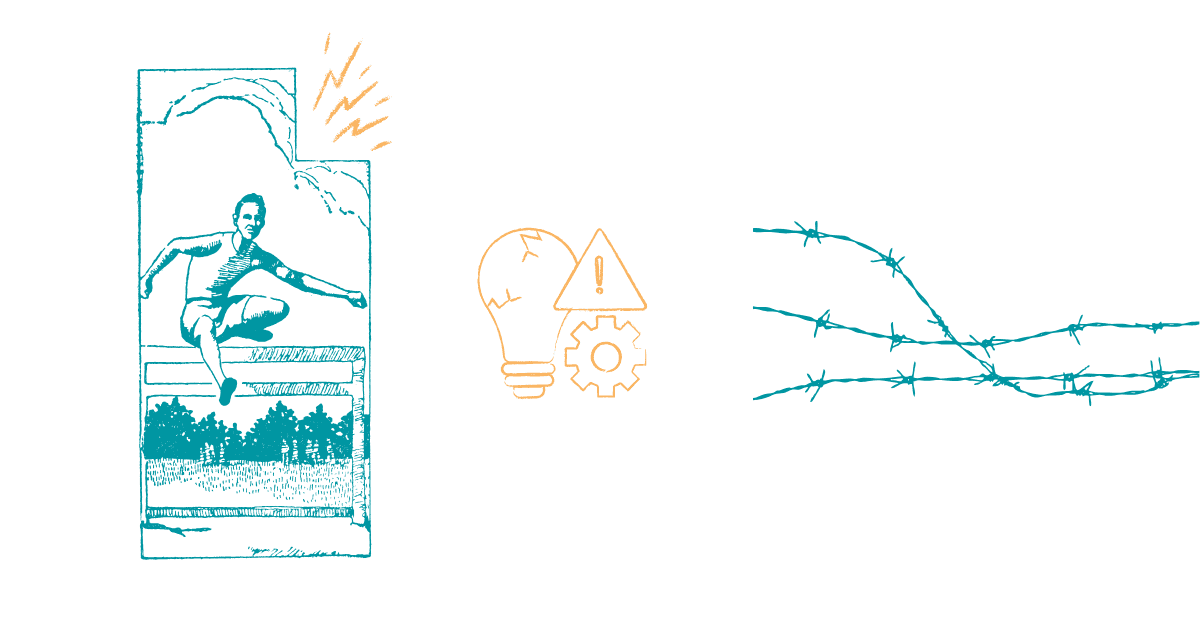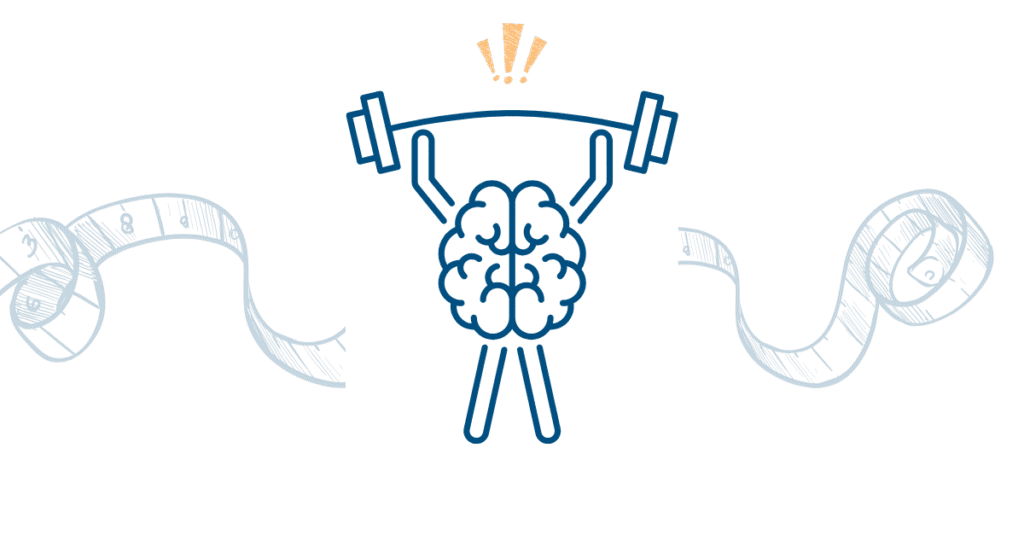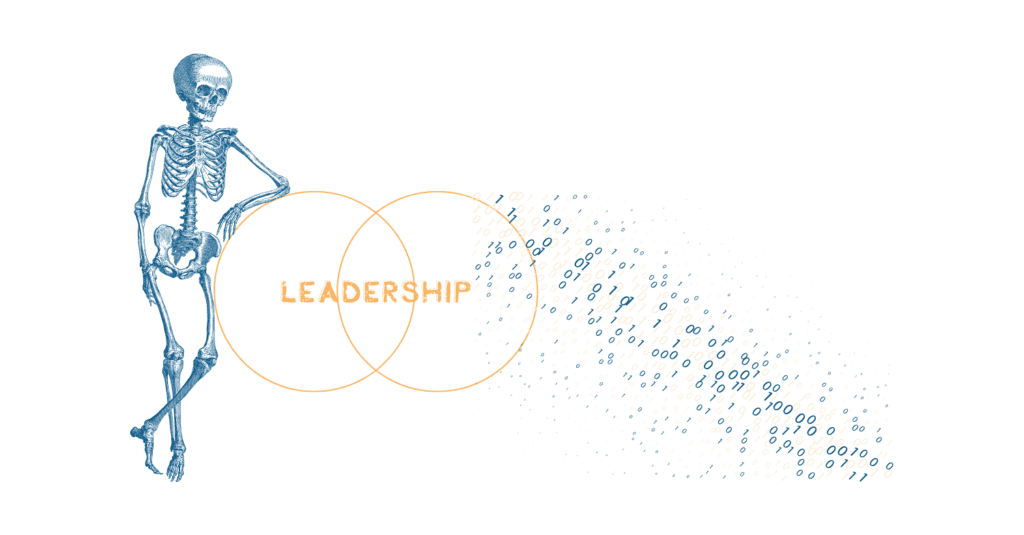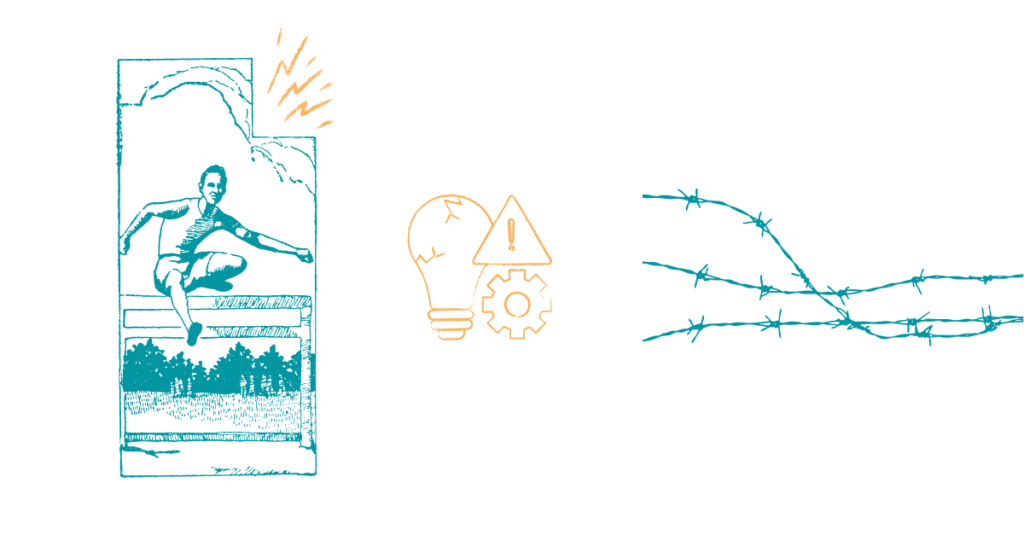The implementation of artificial intelligence (AI) in companies and public institutions often stagnates. The reasons are not a lack of technology, but human and organizational factors. Studies show that around 70% of problems in AI projects are caused by people and processes, while technical causes are comparatively rare. In other words, culture beats AI strategy if companies fail to create the right conditions.
What are the challenges of AI transformation?
The challenge for you as a leader is not just the technology itself—technical hurdles such as insufficient data quality and availability can also cause projects to fail—but above all the way you guide your organization through this fundamental cultural change. This is because the use of AI not only changes processes – it changes the DNA of your organization, the way people work together, how roles are understood, how our brains receive and process information, and ultimately the corporate culture itself. Studies by MIT already show that our thinking and language are changing significantly as a result of our interaction with AI tools such as ChatGPT – we are developing a “System 0” of cognition.
In our work with companies, we encounter the same obstacles over and over again. The good news is that each of these hurdles can be solved – if they’re recognized and the right strategies are chosen.
In this article, we highlight the eight most common obstacles faced by leaders on the path to becoming an AI-powered organization – from a lack of leadership vision and fears among employees to data problems. For each hurdle, we provide a problem analysis and concrete recommendations for action on how to solve it.
The 8 most common obstacles – and how you as a leader can solve them all
Obstacle 1: The competence gap – “We don’t have the AI experts”
The problem in a nutshell
The lack of skilled workers is a major obstacle to the implementation of AI. Companies are desperately searching for external specialists and fail to see their greatest potential: their own employees.
But the problem goes even deeper:
- Even in middle management, there is often a skills gap when it comes to AI.
- There is a lack of basic knowledge about the transition from a deterministic to a stochastic world driven by AI.
- Employees on the front line do not know how to use AI tools or interpret results
- Real innovation comes from the company’s domain experts who know the problems, data, and customers – but if they cannot communicate with AI experts, innovation is slowed down
- The speed of change is not anticipated
- Public administration often lacks training programs
- Dependence on external service providers is increasing, but these are difficult to manage when internal expertise is lacking
The solution for leaders
As a leader, you need to pursue a double-track strategy: develop employees and hire experts. So instead of competing in a depleted labor market, focus on internal AI learning journeys. Your employees know your company, your processes, and your culture. What they are missing are AI skills – and these can be developed.
The triangility approach: Our Human-AI Leadership Journey combines skills development with practical application. We believe that the best AI experts for your company are already sitting in your office – they know your processes, your customers, and your culture. In our programs, mixed teams work on real-world use cases and become internal AI champions.
Key takeaway: Make AI skills a top priority. Invest heavily in training your employees – this is more sustainable and culturally appropriate than desperately trying to poach external experts. Think in terms of ecosystems: partnerships can bridge skills gaps.

Imagine you run a traditional woodworking shop with excellent master craftsmen who have mastered their craft to perfection. Now a new, computer-controlled precision tool comes onto the market. Would you fire your experienced master craftsmen, who know every type of wood and every hand movement, just to search the market for young people who can only operate this one new tool? Of course not. You would train your best people on the new tool, because their experience is your real asset.
Robert Schaffner - AI-Expert, Futurist, Keynote Speaker @triangility
Obstacle 2: The culture gap – ”No one has the courage to experiment with AI in our company.”
The problem in a nutshell
A lived AI culture empowers people to use the potential of AI to the fullest. But in many organizations, there is uncertainty: Will AI replace my job? What if I make mistakes? These fears paralyze innovation. Such anxieties are just as common in small and medium-sized businesses as they are in large corporations or government agencies – often exacerbated by limited experience with AI in everyday life and a lack of anticipation of future developments. Many believe that AI breakthroughs are “still a long way off” and are missing the convergence of AI, humanoid robots, and new battery technologies. When transparency and communication are lacking, many employees view AI as a threat rather than a help.
The result: passive or open resistance to AI tools, adherence to proven (analog) processes, and slowing down of projects. Without an open culture of innovation, even the best technology cannot be successfully implemented.
The solution for leaders
As a leader, you must actively create a culture that promotes AI. Change management is the key factor for success:
- Create psychological safety:
- Communicate clearly and repeatedly that “AI is here to support, not replace.”
- Show specifically how AI reduces routine tasks and frees up time for more valuable activities
- Guarantee that AI-related efficiency gains will not lead to layoffs
- Establish a culture of experimentation:
- Live by the motto “fail fast, learn faster”
- Set up “innovation labs” or “AI playgrounds”
- Launch hackathons or idea competitions on AI
- Celebrate learning moments from failed experiments
- Maximize transparency:
- Explain which decisions are made by AI and which should be made by humans
- Make AI systems as transparent as possible (“explainable AI”)
- Involve employees early on in the design of AI systems
- Build communities:
- Establish a “community of practice” for those interested in AI
- Promote peer learning and knowledge sharing
- Create formats in which employees can present their AI experiments
- Identify change agents:
- Look for AI enthusiasts in every department
- Give them an official role as multipliers
- Support them with time and resources
Key takeaway: Culture does not change by decree. You must actively create spaces where people can experience AI as an opportunity. Your role: Take fears seriously, provide reassurance, and model a culture of experimentation. Without this cultural foundation, any AI initiative will fail.
Get exclusive access to cutting-edge insights and expertly curated tools on digital evolution, cultural transformation, future-forward thinking, resilience, mindfulness, and the future of work.
Obstacle 3: The strategy silo trap – “Our AI strategy does not fit our corporate culture”
The problem in a nutshell
Many companies develop AI strategies in a vacuum – detached from their organizational culture and the people who are supposed to implement them. The result: impressive PowerPoint presentations that no one lives by. Organizational silos also hinder success: departments hoard their data, don’t share expertise, and prioritize their own projects instead of working together on the most important AI initiatives.
The solution for leaders
An effective AI strategy combines technology, people, and corporate culture. It asks not only “What is technically possible?” but also “What fits us?” and “How do we get everyone on board?” Establish a central AI governance or task force that operates across departments. An AI competence center can bring together employees from different departments – data scientists, IT experts, business experts, and management representatives.
Tool recommendation: Our AI Readiness Check helps you to comprehensively assess the status quo. It not only involves technical requirements but also cultural factors and human readiness.
Key takeaway: AI strategy is corporate strategy. Don’t develop it alongside your organization, but with it – and break down silos in the process. AI success is a team sport!
Obstacle 4: The transformation overload – “It’s all too complex for me”
The problem in a nutshell
Artificial intelligence requires a comprehensive rethink and a profound adaptation of corporate structures. This complexity leads to paralysis: leaders don’t know where to start. Added to this is the challenge that external AI tools often offer more than internal solutions, while compliance issues remain unresolved: What can I use and what can’t I use? Can data be used in ChatGPT or only in internal tools?
The amount of challenges—from technical to organizational to cultural—is overwhelming. This often leads to a standstill, especially in small and medium-sized businesses and the public sector, where resources are limited.
The overload shows up in:
- Endless analysis phases without concrete measures
- Procrastination
- Overly ambitious transformation plans that never get implemented
- Retreating to “Let’s wait and see what others do first”
The solution: Break down the transformation into manageable phases. Our proven model: Diagnosis → Analysis → Anchoring. Each phase has clear goals and results. This turns the big transformation into a series of feasible steps.
Methodology highlight: The 20 Development Lines help you systematically identify and prioritize areas for development. From leadership to processes to technology – nothing is overlooked, but nothing is rushed either.
The triangility approach: In our Leadership Journeys, we systematically break down complexity. Using tools such as the Gap Canvas, we visualize where your organization stands and what steps make sense next. Most importantly, we help you take action instead of getting stuck in analysis.
Key takeaway: Complexity only paralyzes you if you try to solve everything at once. Think in phases, prioritize radically, and celebrate small successes. AI transformation is a marathon—but every marathon begins with the first step.
No climber conquers Mount Everest by staring at the summit from base camp. The sheer height would be paralyzing. An experienced mountain guide plans the route in stages: from base camp to camp 1, then to camp 2. Each stage is an achievable goal. You celebrate reaching each camp, ensuring that the team is fit and motivated for the next climb.
Robert Schaffner - AI-Expert, Futurist, Keynote Speaker @triangility
Obstacle 5: The efficiency illusion – “The most important thing is to make my team 30% more efficient.”
The problem in a nutshell
Implementing AI can increase efficiency in business areas by up to 30 percent. But those who only focus on efficiency miss out the real potential: new business models, better customer experiences, and innovative products. Caution is advised here due to the rebound effect: if entry-level roles are replaced by AI while domain experts with AI support achieve more, where will tomorrow’s domain experts come from?
However, leaders should not forget that quick wins are important for building trust and showing that everyone needs to learn quickly to move forward with AI. The Gartner AI Opportunity Radar can provide valuable guidance here.
The solution for leaders
Do’t think of AI as an optimization tool, but as an enabler for new things. The question is not just “How do we make things faster?”, but “What will AI make possible for the first time?”
Change of perspective: At triangility, we talk about “human-centered augmented by AI.” AI expands human capabilities more than just accelerating them. This approach opens the door to transformative rather than incremental change.
Key takeaway: Efficiency is good, innovation is better. Use AI to create something new, not just optimize the old. But don’t forget: Quick wins help with change management.
Obstacle 6: Role ambiguity – “Who does what in the AI future?”
The problem in a nutshell
Artificial intelligence unfolds its potential best when it is integrated into different roles. But there is often ambiguity: Who decides? Who controls? Who learns from whom? MIT studies show that when AI takes over tasks, new questions arise about responsibility and emotional connection to work – who still feels proud of what they have achieved?
The solution for leaders
Develop new collaboration models for human-machine interaction. Define clearly where AI supports, where it enhances, and where humans remain in charge.
Framework: Spiral Dynamics helps us think about organizational development in evolutionary terms. Each stage of development requires different forms of collaboration. AI adds a new stage – shape it consciously.
Key takeaway: In the AI future, old roles will disappear. Create new ones that optimally connect humans and machines.

Obstacle 7: Lack of leadership vision – “ The management is still procrastinating.”
The problem in a nutshell
The biggest hurdle is often the hesitation of the management itself. The team is ready, but the management is not moving fast enough toward an AI future.
This “leadership inertia” has several causes:
- Many leaders underestimate the strategic importance of AI
- They are reluctant to move away from tried-and-tested traditional approaches
- They often lack the technical understanding to grasp the implications
- Fear of losing control in an organization that is co-controlled by algorithms
- Without your own AI experience, it is difficult to have a say – how can you decide on something you have never experienced yourself?
Without support from above, however, there is a lack of direction, resources, and, above all, cultural legitimacy for AI initiatives. Teams wait for clear signals before investing time and energy in AI projects.
The solution for leaders
As a leader, you need to actively engage with AI – not at a technical level, but at a strategic and cultural level. The following steps have proven effective:
- Build personal AI literacy: Attend executive briefings that explain AI at a strategic level. Even better, become an AI power user yourself. You don’t have to become a data scientist, but you do need to understand and experience the basic concepts and potential.
- Exchange best practices: Seek dialogue with pioneers in your industry. When you see how competitors are achieving success with AI, the need for action becomes tangible.
- Develop and communicate a vision: Develop an ambitious but realistic vision: How should AI create value in your company in 3-5 years? This vision must go beyond efficiency gains and include cultural change.
- Demonstrate visible commitment:
- Participate in AI pilot projects yourself
- Ask specific questions about AI-based solutions in meetings
- Celebrate small AI successes publicly within the company
- Invest personal time in AI topics
- Structural anchoring: Appoint an AI sponsor on the board or create the role of a “Chief AI Officer.” This person acts as a bridge builder between technology and business.
The triangility approach: In our Leadership Journeys, we work with leadership teams to develop a shared AI vision that fits the corporate culture. It’s not about technical details, but about the question: How do we want to deal with AI as an organization? What values guide us in this?
Key takeaway for leaders: Your attitude toward AI shapes the entire organization. Without your clear vision and visible commitment, even the best AI initiatives will fizzle out. You don’t have to know everything about AI – but you do need to know why AI is important for your organization and be able to communicate this convincingly.
Obstacle 8: Regulatory insecurity – “What is permitted and what is not?”
The problem in a nutshell
Data protection (GDPR), IT security laws, and the EU AI Act create a dense web of regulations. When there is uncertainty about how AI applications can be implemented in a legally compliant manner, this leads to considerable reluctance.
The solution for leaders
Develop a forward-looking “responsible AI” strategy. Involve lawyers and data protection experts at an early stage. Establish internal AI ethics guidelines and create transparency about algorithmic decisions.
Practical tip: Proactively seek dialogue with regulatory authorities. Privacy-by-design approaches such as federated learning enable AI use with maximum data protection. Turn compliance into a competitive advantage – customers reward transparent and fair AI.
Key takeaway: Innovation and regulation are not contradictory. Proactively ensuring responsibility takes the fear out of the obstacles.
The triangility approach: Human-AI Leadership Journey
All eight obstacles have one thing in common: they are created when we view AI transformation as a purely technical project. The key lies in a human-centered approach that combines technology, culture, and leadership.
Our Human-AI Leadership Journey systematically guides you through three phases:
- Diagnosis: Where are you now? The AI Readiness Check provides orientation.
- Analysis: What are your levers? Gap analysis and prioritization.
- Embedding: How does AI become part of your DNA? Through labs, prototypes, and community.
Conclusion: Leaders can overcome AI obstacles
AI transformation is a dynamic process – and it starts with recognizing and overcoming typical obstacles. Each of the eight hurdles can be overcome if you put people at the center – because ultimately, it is employees who decide whether to accept or reject AI in their everyday work.
Because one thing is certain: the future may be digital, but it will remain human. Futures are human – and with the right approach, AI will not be a threat, but an opportunity for more humane, better work. AI transformation is a marathon, not a sprint – but every marathon begins with the first step.
Want to dive deeper? In our Human-AI Leadership Journey, we guide you and your team systematically through all phases of AI transformation. Schedule a no-obligation initial consultation and learn how we can support you.
FAQ
1. How long does a successful AI transformation take in medium-sized companies?
A realistic AI transformation follows our 3-phase model: Diagnosis up to 3 months, but initial workshops and quick wins start right away – so the transformation journey begins immediately. The duration depends on the complexity and size of the company and the current status quo and must therefore be clarified on an individual basis. The anchoring phase is followed by pilot projects that put what has been learned into practice.
2. Which leadership skills are particularly important for AI transformation?
Leaders in AI transformation need above all ambidextrous leadership – the ability to simultaneously ensure operational excellence and enable cultural change. Specifically, this means: Strategic AI literacy (basic understanding without technical details), change leadership (creating psychological safety), futures literacy and strategic foresight (anticipating future developments), eagerness to experiment (modeling a culture of error), strong communication skills (conveying a vision), and systemic thinking (breaking down silos). You don’t need to become AI experts, but you do need to understand how AI is changing your industry and be able to communicate this convincingly.
3. How do I overcome resistance to AI implementation among middle management?
Middle management is often the most critical level, as this is where fears of losing control are strongest. Successful approaches: Involve them early on in strategy development and works council communication, define new roles (from control to coaching), position AI as an assistant (expanding capabilities rather than replacing them), present clear cost-benefit analyses, share success stories from their own level, and highlight career paths (AI expertise as a career booster). Particularly effective: Let middle leaders lead their own AI pilot projects – this will turn skeptics into ambassadors.

Core principles, competences and practices for modern leadership.







